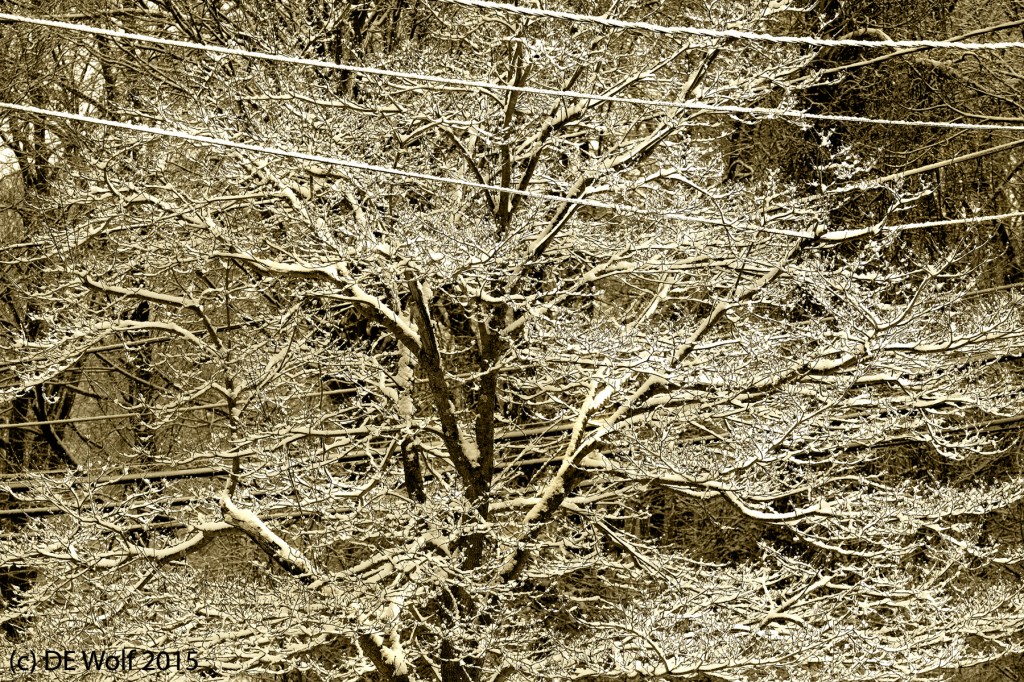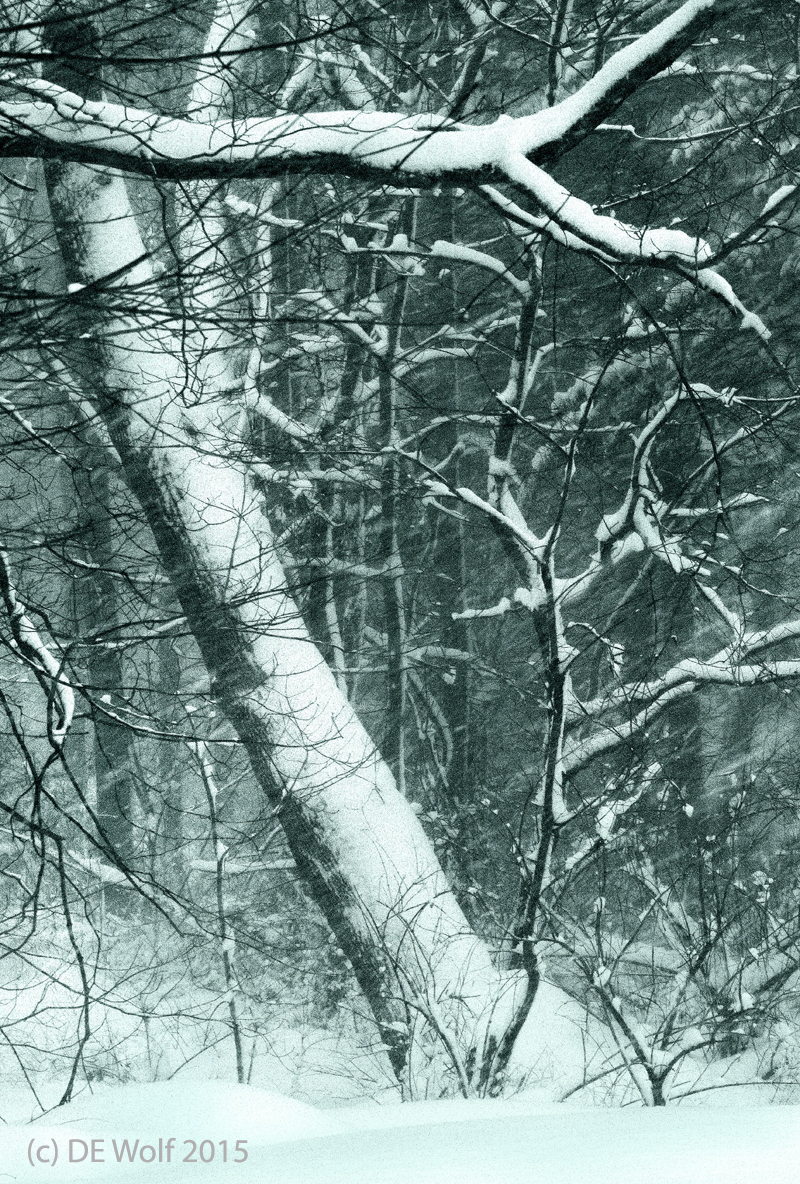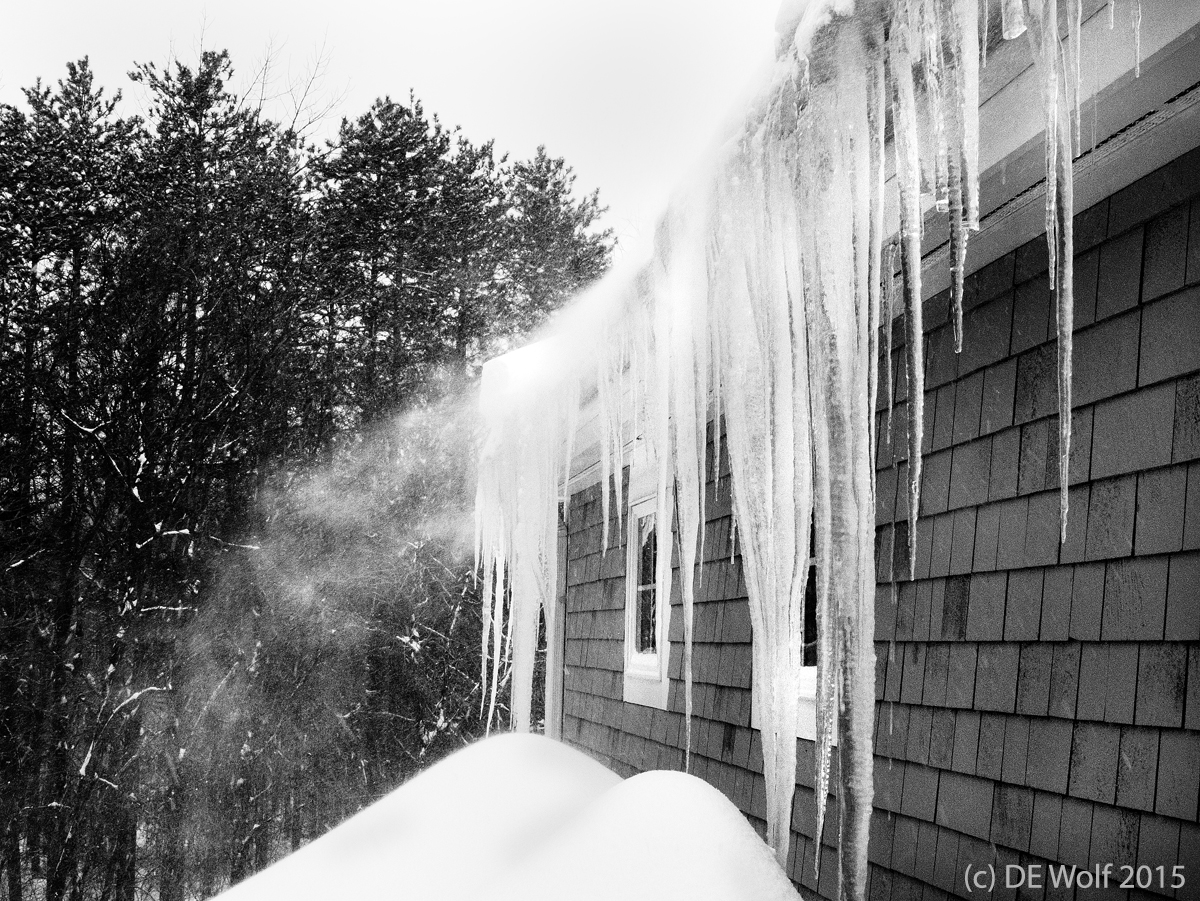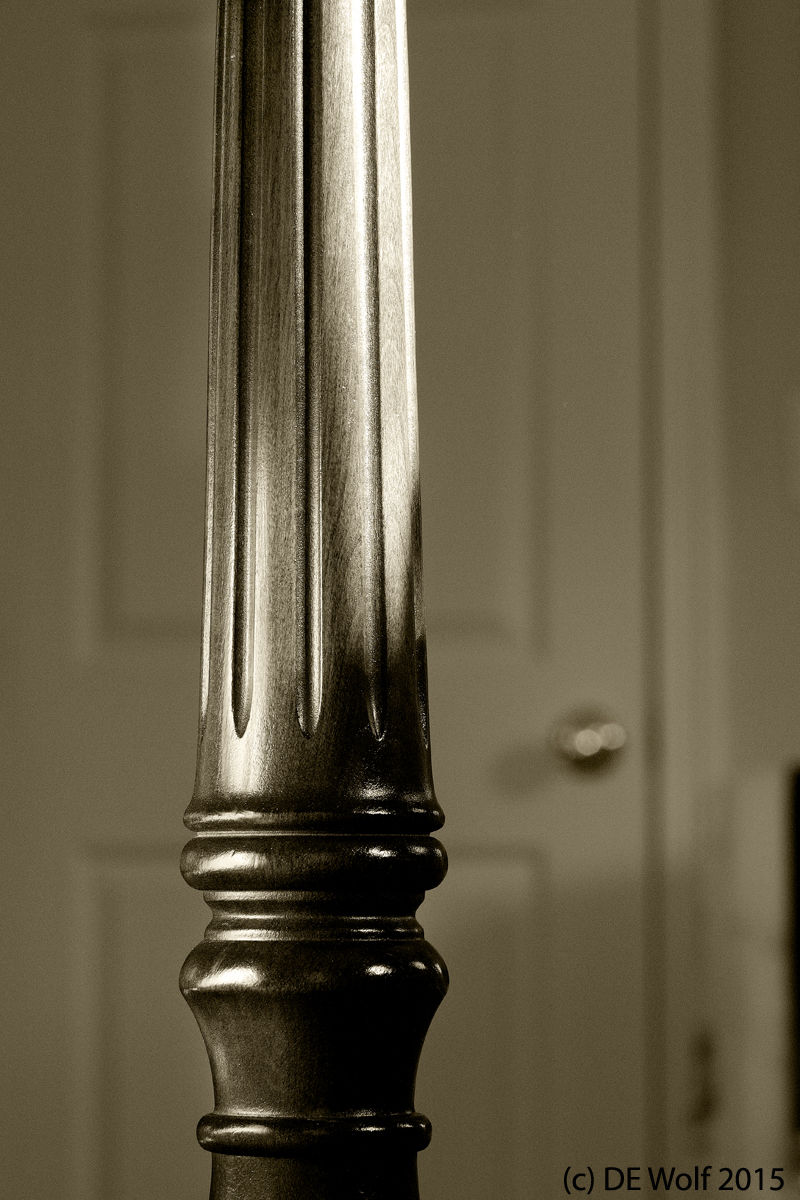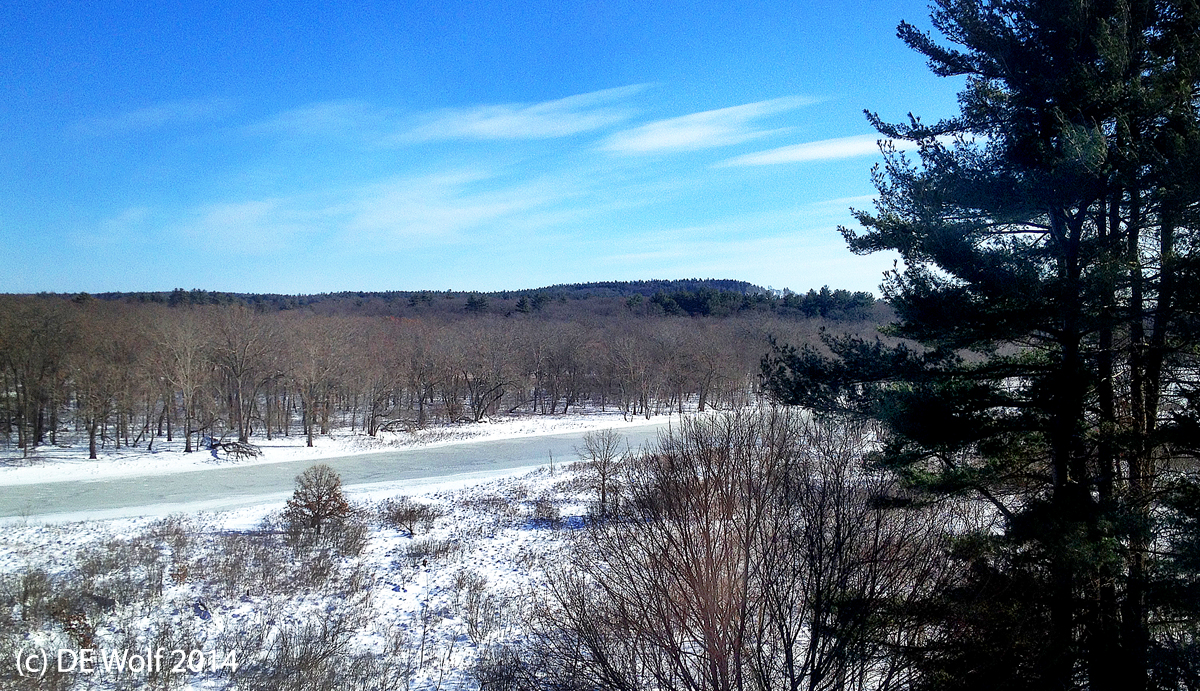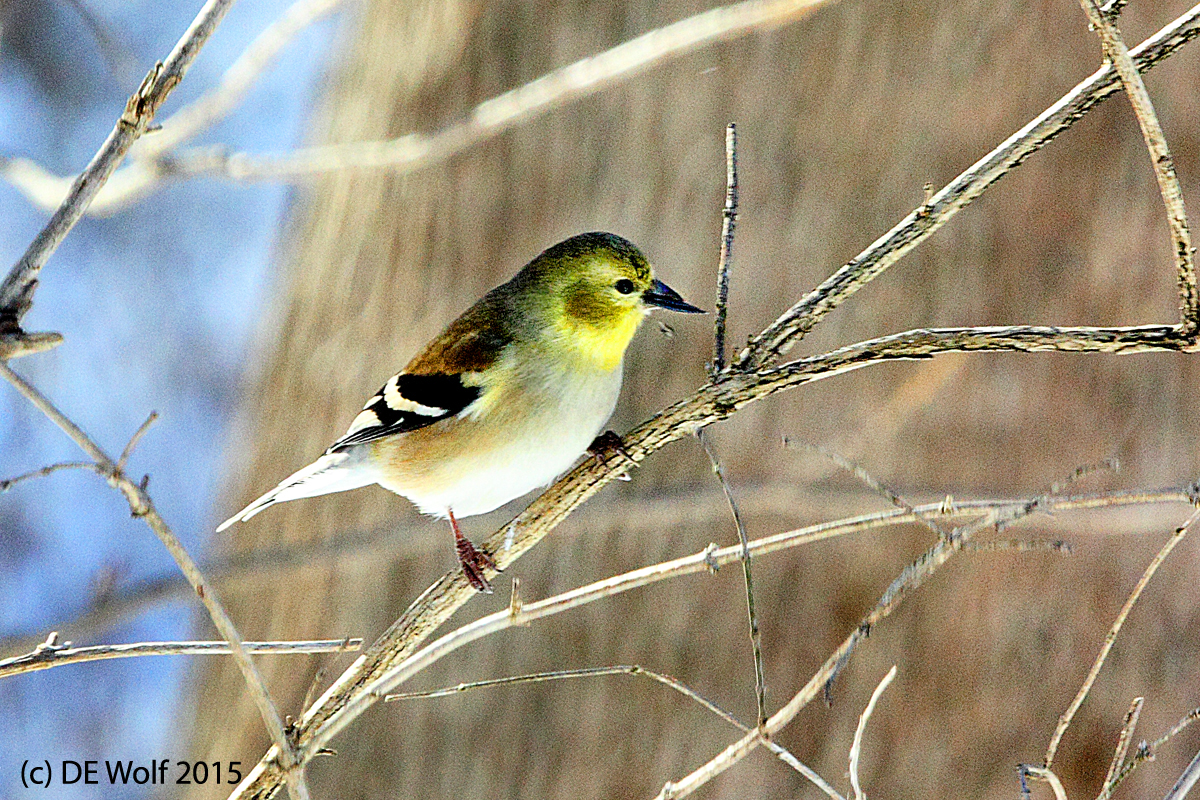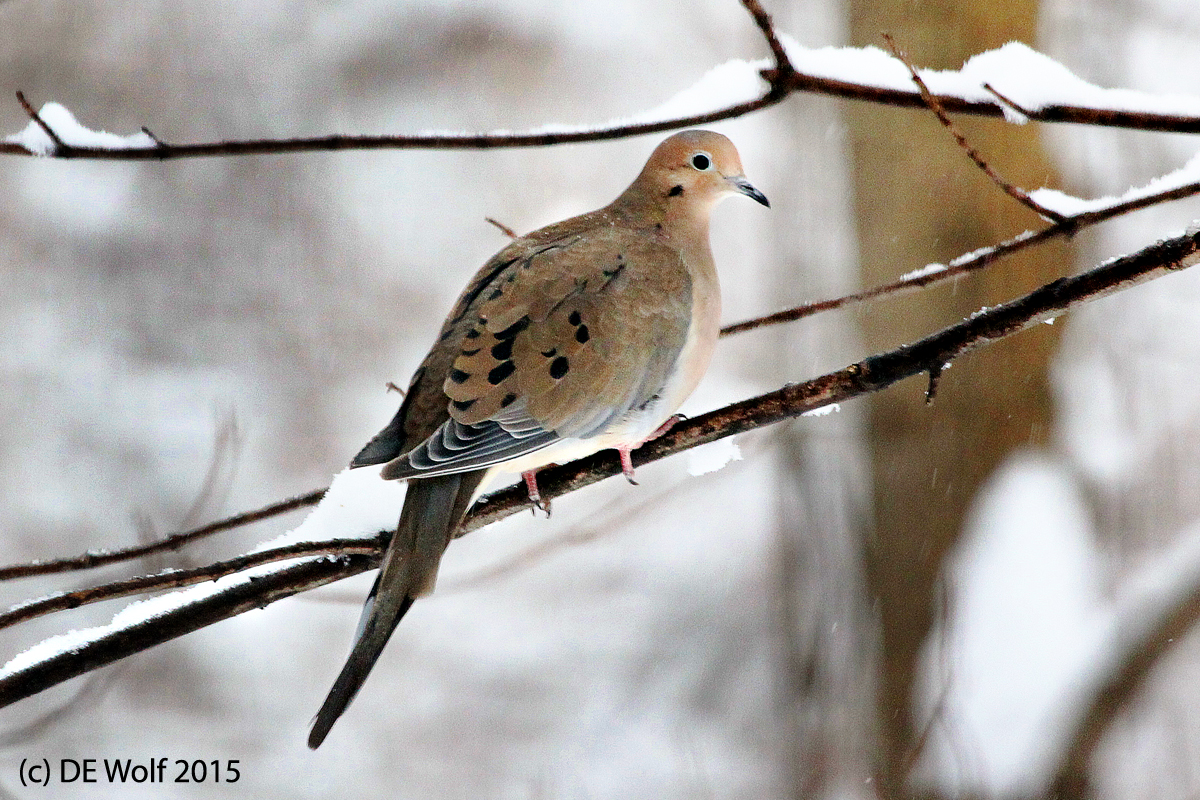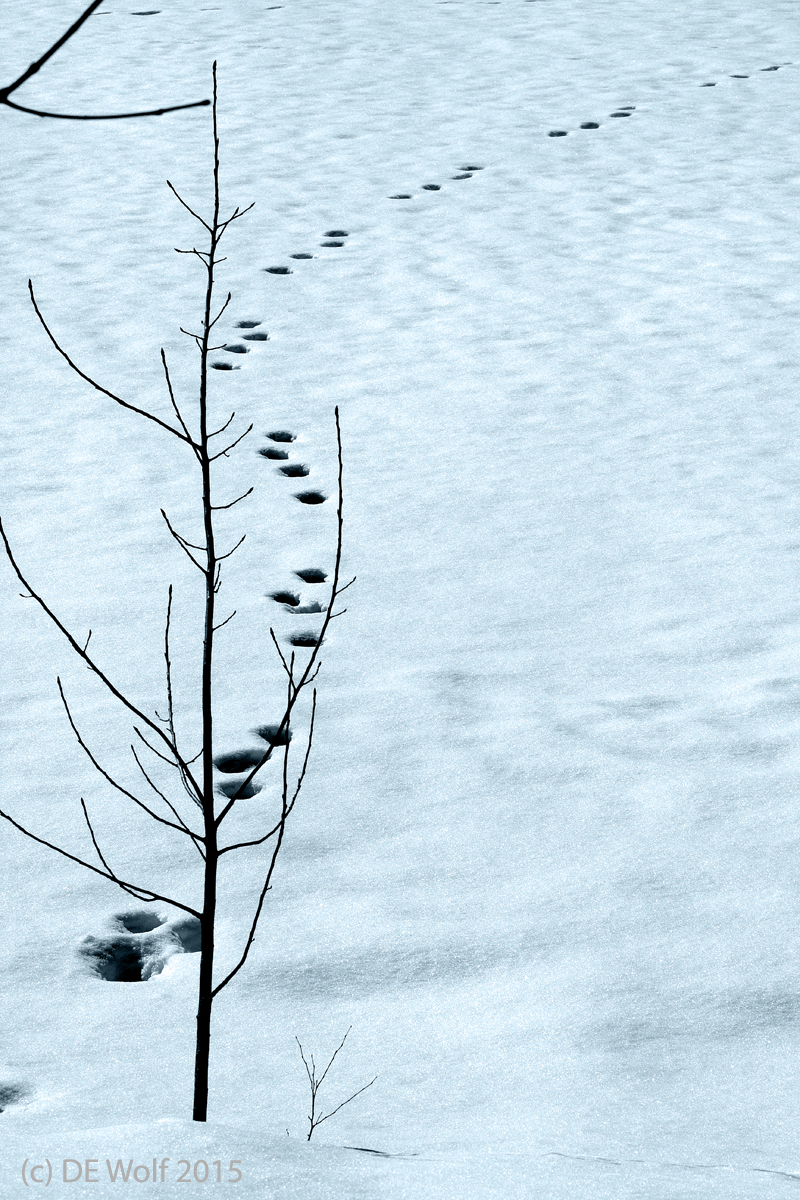
Figure 1 – Winter 2015 # 1, Sapling and squirrel trail on Little Fresh Pond, Cambridge, MA. (c) DE Wolf 2015.
Temps in the 30’s F yesterday; so it was time to clamp on my crampons and venture out into the wilderness of the Fresh Pond Reserve. Everything was absolutely gorgeous. It was enough to restore my faith in the glories of winter.
I happened upon a dead and frozen robin. I am not one to photograph dead and decaying things, this despite the Rembrandt tradition where a side of beef alludes to the crucifixion. It was a personal tragedy for that poor bird the night before, and I can empathize with that and the continuity of the natural world. So I took no photographs of it. I’ll leave that art form to others.
For the natural world winter is a testing ground, a major obstacle to be survived, an evolutionary challenge. Still when you survey the landscape you realize that first there is the pure beauty of the physical phenomena of cold, ice, and wind. You might as well be on a lifeless alien world. But, second you realize that it is a world alive. The signs of life are what challenges or contrasts with the desolation.
These are the thoughts that went into my first photograph of the afternoon. There was a little sapling struggling to survive on the shore of what is called “Little Fresh” pond. And winding away from this diminutive tree is a trail, made I suspect by a grey squirrel hopping through the snow. The squirrels are always busy in winter. Their lives are not like those of “Chip and Dale.” There is the constant searching for food, and food is essential to maintain body temperature against the snow. Again, I can empathize and, as a result, I do not begrudge these guys for relentlessly helping themselves to sunflower seeds from my bird feeder. They have to eat too!
But back to the photograph (Figure 1). As always underexpose by a stop. I love the simple geometric contrasts of snow patterns. I did this as a black and white. At the end I converted it to color again and tinted with a cold tone. Cold tone is not my usual choice. But it is appropriate for snow. Indeed I could have stayed in color mode from all the get go.
Canon T2i with EF70-200mm f/4L USM lens at 70 mm, ISO 400, Aperture Priority – AE mode, 1/640th sec at f/16.0 with +1 exposure compensation.

